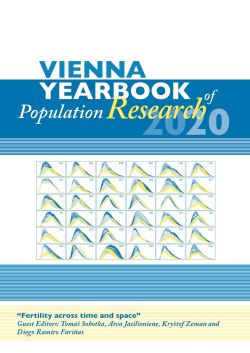
Vienna Yearbook of Population Research 2020, pp. 167-184, 2020/07/22
Fertility across time and space

In high-income countries, women and men born since the 1940s have delayed the birth of their first child, more of them have remained childless, and the timing of the first birth has become more diverse in these cohorts. The interaction between these three trends makes the research on first birth patterns more complex. This study has two main aims: (1) we introduce an alternative index, Expected Years Without Children (EYWC), to quantify changes in first birth behaviour; and (2) we decompose the changes in EYWC over time into three effects: remaining permanently childless, postponing the first birth, and the expansion of the standard deviation of the mean age at first birth. Using data from the Human Fertility Database, EYWC is calculated to illustrate time trends among women born in the 1910s–1960s in eight countries with longer series of data on cohort first birth trends: Canada, the Czech Republic, Japan, the Netherlands, Norway, Portugal, Sweden, and the United States. Our decomposition shows that the changes in EYWC are mainly attributable to postponement in North America and northern Europe, whereas these changes are largely due to increasing shares of women remaining childless in Japan and Portugal.
Keywords: childlessness; postponement of first birth; decomposition method; Coale-McNeil model; life table